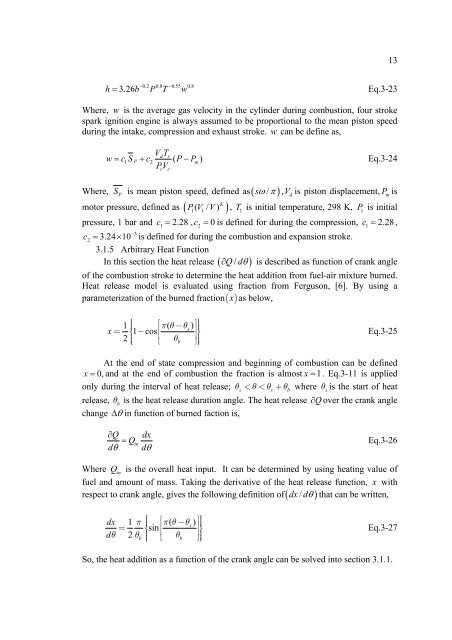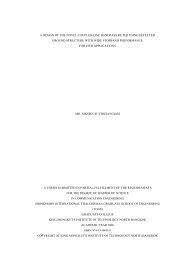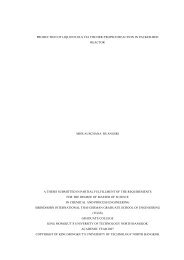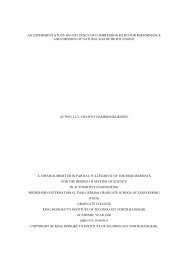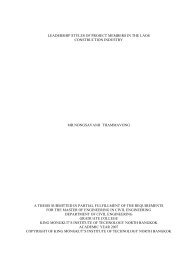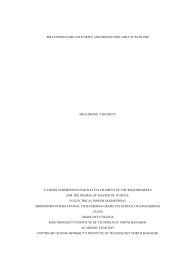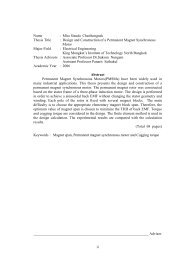analysis of water injection into high-temperature mixture of ...
analysis of water injection into high-temperature mixture of ...
analysis of water injection into high-temperature mixture of ...
Create successful ePaper yourself
Turn your PDF publications into a flip-book with our unique Google optimized e-Paper software.
13h b P T w−0.2 0.8 −0.55 0.8= 3.26Eq.3-23Where, w is the average gas velocity in the cylinder during combustion, four strokespark ignition engine is always assumed to be proportional to the mean piston speedduring the intake, compression and exhaust stroke. w can be define as,VTd rw= c1S p + c2 ( P− Pm) Eq.3-24PVrrWhere, SPis mean piston speed, defined as( sω / π ) , Vdis piston displacement, Pmismotor pressure, defined as ( PV1( 1/ V ) K), T1is initial <strong>temperature</strong>, 298 K, P1is initialpressure, 1 bar and c1= 2.28 ,c2= 0is defined for during the compression, c1= 2.28 ,−3c 2= 3.24×10 is defined for during the combustion and expansion stroke.3.1.5 Arbitrary Heat Function∂ Q/dθ is described as function <strong>of</strong> crank angleIn this section the heat release ( )<strong>of</strong> the combustion stroke to determine the heat addition from fuel-air <strong>mixture</strong> burned.Heat release model is evaluated using fraction from Ferguson, [6]. By using aparameterization <strong>of</strong> the burned fraction( x)as below,1 ⎧⎡πθ( −θ) ⎤⎫1 cossx = ⎪⎨ −⎥⎪2⎢ ⎬⎪⎩⎣ θ ⎥⎪b ⎦⎪⎭Eq.3-25At the end <strong>of</strong> state compression and beginning <strong>of</strong> combustion can be definedx = 0, and at the end <strong>of</strong> combustion the fraction is almost x = 1. Eq.3-11 is appliedonly during the interval <strong>of</strong> heat release; θ s< θ< θ s+ θ bwhere θ sis the start <strong>of</strong> heatrelease, θbis the heat release duration angle. The heat release ∂Qover the crank anglechange Δθin function <strong>of</strong> burned faction is,∂Qdx= QinEq.3-26dθdθWhere Q inis the overall heat input. It can be determined by using heating value <strong>of</strong>fuel and amount <strong>of</strong> mass. Taking the derivative <strong>of</strong> the heat release function, x withrespect to crank angle, gives the following definition <strong>of</strong>( dx / dθ ) that can be written,dx 1 π ⎧⎡πθ( −θs) ⎤⎫= ⎪⎨sin⎥⎪dθ 2 θ ⎢ ⎬b ⎪⎩⎣ θb⎦⎥⎪⎪⎭Eq.3-27So, the heat addition as a function <strong>of</strong> the crank angle can be solved <strong>into</strong> section 3.1.1.


